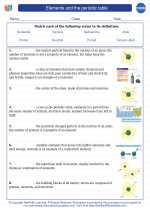Compounds
A compound is a substance formed when two or more different elements are chemically bonded together. The atoms of the elements in a compound are held together by chemical bonds, which are strong forces of attraction.
Formation of Compounds
Compounds are formed through chemical reactions, where the atoms of different elements combine to form new substances. The resulting compound has different properties from the original elements.
Types of Compounds
Compounds can be classified into different types based on the bonds present:
- Ionic Compounds: Formed by the transfer of electrons between metal and non-metal atoms.
- Covalent Compounds: Formed by the sharing of electrons between non-metal atoms.
- Metallic Compounds: Formed by the sharing of electrons between metal atoms within a metallic lattice.
Properties of Compounds
Compounds have unique properties that are different from the elements that form them. These properties include melting point, boiling point, solubility, conductivity, and chemical reactivity.
Naming Compounds
Compounds are named using chemical nomenclature rules based on the types of elements and bonds present in the compound. For example, ionic compounds are named using the names of the constituent ions, while covalent compounds use prefixes to indicate the number of atoms present.
Study Guide
To study compounds, focus on the following key points:
- Understand the difference between elements and compounds.
- Learn the different types of compounds and how they are formed.
- Memorize the properties of compounds and how they differ from the properties of elements.
- Practice naming compounds using chemical nomenclature rules.
- Explore and understand the applications of different compounds in everyday life and industry.
◂Chemistry Worksheets and Study Guides High School. Elements and the periodic table
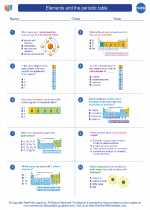
 Worksheet/Answer key
Worksheet/Answer key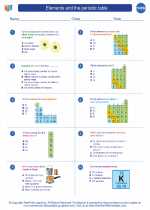
 Worksheet/Answer key
Worksheet/Answer key
 Vocabulary/Answer key
Vocabulary/Answer key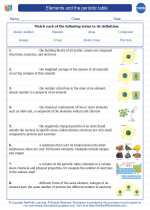
 Vocabulary/Answer key
Vocabulary/Answer key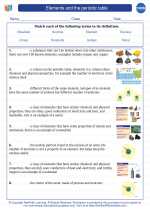
 Vocabulary/Answer key
Vocabulary/Answer key